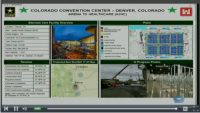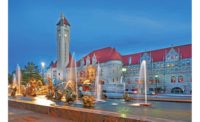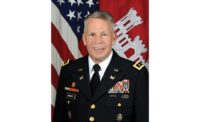ENR 2020 Top 25 Newsmakers
Justin Barton: Led Team to Deliver First Large-Scale PFTE Mesh Installation on Stadium

Engineer of innovative sports structures led team that delivered first large-scale use of woven PTFE laminate mesh at Allianz Field
PHOTOS COURTESY OF WALTER P MOORE AND JAMES EWING/POPULOUS

Allianz Field in St. Paul, Minn., has 88,000 sq ft of PTFE laminate mesh covering its upper structure and partial roof. Barton, a longtime soccer fan, brought ideas from Allianz Arena in Munich.


Long before he became team lead of Walter P Moore’s sports community of practice—a firm-wide group with experience and interest in stadium, arena and other sports projects—Justin Barton was a soccer fan. His wife, Angie, grew up in Europe watching soccer with her father, stationed there with the Air Force for 29 years, with seven of those years spent in Germany. Revisiting those soccer stadiums was the impetus for a visit by Angie and Justin in 2010 to Germany, where the young engineer saw Allianz Arena in Munich.
That arena has ethylene tetrafluoroethylene (ETFE) pillows that clad and partially roof the building, allowing light shows and other presentations to be displayed on the luminous exterior. Barton considered, “What if you could make a structure like that without it being panelized?”
In 2015, Walter P Moore had the first meetings with architect Populous on a new stadium project for Major League Soccer’s Minnesota United FC team. “The first thing I thought of was this looks a lot like Allianz Arena in Munich,” Barton says. “Ultimately, to have the Allianz brand on this project was a real full circle moment for me.”
Instead of using ETFE panels, Barton and his team created the first PTFE (polytetrafluoroethylene) laminate mesh wrap for a sports stadium. Some 88,000 sq ft of the specialized material is stretched around the upper structure of Allianz Field and backlit with 1,700 LED lights. Unlike the Munich material, PTFE mesh can span unsupported for up to 30 ft, which conserved 100 tons of steel in the structural frame.
Using a design that takes advantage of a frame of pipes that encircle the stadium to make its form and “drive” the geometry of flowing fabric, Barton found a way to make the riverine wrap happen. The PTFE material was chosen to look like both water and like Minnesota’s northern lights when backlit.
The material had to be strong enough to span 22 ft from pipe to pipe in the frame, but it also needed to be flexible “to create the undulating, curving geometry,” according to Phil Kolbo, lead designer from Populous
The PTFE wrap is also weather-tight so that the fans are protected from wind, snow and rain. Minnesota United wanted cladding that was transparent, and the PTFE mesh allows the energy of a large crowd to be visible through the transparent laminate mesh. Fabricator Fabritech sourced the PTFE material from China, and it was heat-welded together for installation by CM Mortenson on site. Because the material can contract and expand, no expansion joints are needed with proper installation.
In Minnesota weather, the stadium is going to be “exposed to 90 degrees of temperature change,” says Kolbo, adding that Barton acknowledged how difficult the job was, “but always said, ‘We can get that done,’ and he did. We could rely on him with the integration of our work processes.”






